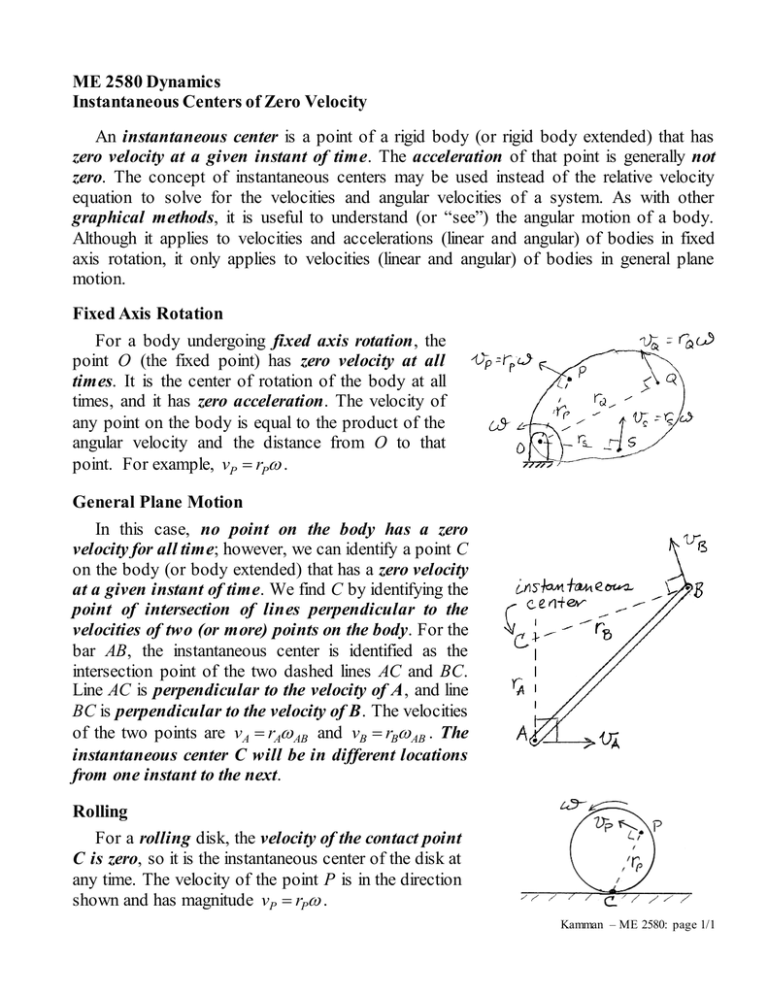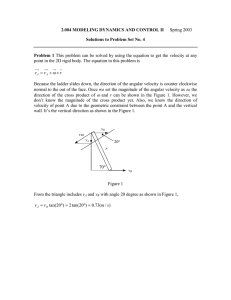ME 2580 Dynamics Instantaneous Centers of Zero Velocity instantaneous center
advertisement

ME 2580 Dynamics Instantaneous Centers of Zero Velocity An instantaneous center is a point of a rigid body (or rigid body extended) that has zero velocity at a given instant of time. The acceleration of that point is generally not zero. The concept of instantaneous centers may be used instead of the relative velocity equation to solve for the velocities and angular velocities of a system. As with other graphical methods, it is useful to understand (or “see”) the angular motion of a body. Although it applies to velocities and accelerations (linear and angular) of bodies in fixed axis rotation, it only applies to velocities (linear and angular) of bodies in general plane motion. Fixed Axis Rotation For a body undergoing fixed axis rotation, the point O (the fixed point) has zero velocity at all times. It is the center of rotation of the body at all times, and it has zero acceleration. The velocity of any point on the body is equal to the product of the angular velocity and the distance from O to that point. For example, vP rP . General Plane Motion In this case, no point on the body has a zero velocity for all time; however, we can identify a point C on the body (or body extended) that has a zero velocity at a given instant of time. We find C by identifying the point of intersection of lines perpendicular to the velocities of two (or more) points on the body. For the bar AB, the instantaneous center is identified as the intersection point of the two dashed lines AC and BC. Line AC is perpendicular to the velocity of A, and line BC is perpendicular to the velocity of B. The velocities of the two points are vA rA AB and vB rB AB . The instantaneous center C will be in different locations from one instant to the next. Rolling For a rolling disk, the velocity of the contact point C is zero, so it is the instantaneous center of the disk at any time. The velocity of the point P is in the direction shown and has magnitude vP rP . Kamman – ME 2580: page 1/1




